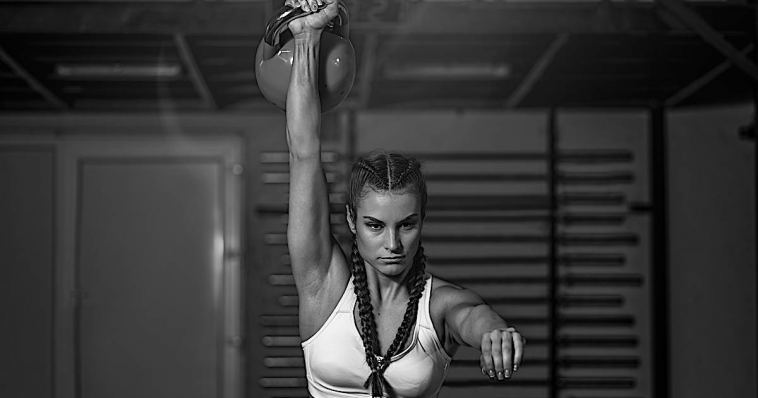- Like
- SHARE
- Digg
- Del
- Tumblr
- VKontakte
- Flattr
- Buffer
- Love This
- Save
- Odnoklassniki
- Meneame
- Blogger
- Amazon
- Yahoo Mail
- Gmail
- AOL
- Newsvine
- HackerNews
- Evernote
- MySpace
- Mail.ru
- Viadeo
- Line
- Comments
- Yummly
- SMS
- Viber
- Telegram
- JOIN
- Skype
- Facebook Messenger
- Kakao
- LiveJournal
- Yammer
- Edgar
- Fintel
- Mix
- Instapaper
- Copy Link
What lessons can we learn from world champions in a biomechanical comparison of different kettlebell snatch styles?
This article will take an in-depth look at the difference between kettlebell snatch styles. No, I won’t be comparing hardstyle to kettlebell sport, but instead, I’ll be having a look at some of the different styles within the kettlebell sport itself.
Kettlebell Sport Styles
Kettlebell sport involves a wide variety of styles, even with a few similar to hardstyle. I’ve been lucky enough to test a range of elite kettlebell lifters.
Still, I have chosen these two because I feel they exemplify what GS world champion Arseny Zhernakov refers to as classic-style and modern-style. These athletes are no joke; both have performed 200+ snatches with a 32 kg kettlebell in 10 minutes!
Below are some illustrations of the trajectory of the kettlebell from a front-on view of these two athletes. You can see that the path of athlete A has a larger side to side movement.
In contrast, athlete D appears to minimize the side to side movement (only moving from between the legs to directly over the shoulder). This contrast epitomizes the differences between these two styles. To my thinking, the classic was an adaption of the barbell snatch technique (predominantly moving through the sagittal plane).
Over time people started to make use of the kettlebells increased mobility, allowing for more significant lateral movement.
In summary, classic and modern snatch styles have a marked difference within their trajectories. The figure below illustrates the path of athletes A and D.
If you want more information on the trajectory of the kettlebell snatch, you can look up my paper – “Snatch trajectory of elite-level girevoy (kettlebell) sports athletes and its implications to strength and conditioning coaching.”1
Classic Versus Modern Style KB Snatches
The classic style of the kettlebell snatch is the closer of the two to a barbell snatch, where both legs perform work to propel and to decelerate the kettlebell together.
In contrast, the modern style has a somewhat asynchronous movement pattern, where force increases on one leg and decreases on the other.
This movement is caused by the shifting of the body to counterbalance the kettlebell. As such, the kettlebells trajectory starts to move further to the side.
The table below breaks down each phase of the snatch and outlines some of the differences:
| Phase | Classic Style | Moxdern Style |
|---|---|---|
| Fixation | Legs supporting the lifters body weight and kettlebell | |
| Drop | Shift backward with both legs | Shifts onto the opposite (contralateral to the kettlebell) leg |
| Backswing | During the backswing phase, there is an even deceleration of force from each leg | During the backswing phase, there is a rapid deceleration of power from the ipsilateral side, and the weight is a shift to that side |
| End of Backswing | There is a lull at the end of the backswing, which allows for a moment of rest before the power upwards phase | |
| Acceleration Pull (Second Pull) | Even acceleration from each leg | The ipsilateral leg accelerates the kettlebell up |
| Hand insertion (Catch) | The kettlebell becomes weightless as it maneuvers onto the back of the wrist | Weight is shifted onto the contralateral leg to support the body, then rapidly moved back to the ipsilateral leg to help with the catch |
| Fixation | Legs supporting the lifters body weight and kettlebell | |
In the graph below, you can see how the force of each leg changes over the time course of repetition (the higher the line, the higher the force).
The stick figure above the ground reaction force trace starts from the left side of the page in fixation. This phase is then followed by the drop phase, which is where you begin to see the differences within the styles. The line down the middle breaks up the downward and upward phases.
The top figure is lifter A using a classic-style, and the lower figure is lifter B using a modern-style. In the examples, I haven’t included any numbers because these athletes have different body shapes and strength levels.
If you are interested in an in-depth read on the force involved in the kettlebell snatch, have a read of my paper – “External kinetics of the kettlebell snatch in amateur lifters.”2
Below are graphs of my own classic and modern-styles snatches. I performed these on the same day. I’m well off performing 200 reps with a 32 kg snatch; however, I can perform a 10-minute set with it.
Again, we must recognize and can almost view the ground reaction force as a unique signature.
My classic style kettlebell snatch:
My modern style kettlebell snatch:
The graph below illustrates a side by side comparison of the force from the left and right legs, one line for each style. Interestingly, when I combined the power from each leg, the ground reaction force is very similar for each style.
It’s hard to make any general recommendations (from force plate data) regarding style. However, it is individual, and you need to use the safest technique that allows you to optimize your performance.
It’s important to remember that with one hand change, grip strength endurance is typically the limiting factor within kettlebell sports performance.
The Trajectory Differs
The big takeaway from this is that there is a difference in the trajectory of modern and classic kettlebell sport styles. This difference may affect the ground reaction force and how the weight shifts.
The modern-style will accelerate the kettlebell with one leg (maybe to rest the other leg until the hand switch), while the classic will use both legs to accelerate the kettlebell (perhaps using each leg half as much).
Both modern and classic kettlebell sport styles have merit, and you can have an excellent performance with either.
References
1. Ross, James A., Cameron J. Wilson, Justin WL Keogh, Kuok Wai Ho, and Christian Lorenzen. “Snatch Trajectory of Elite-Level Girevoy (Kettlebell) Sport Athletes and Its Implications to Strength and Conditioning Coaching.” International Journal of Sports Science & Coaching 10, no. 2-3 (2015): 439-452.
2. Ross, James A., Justin WL Keogh, Cameron J. Wilson, and Christian Lorenzen. “External kinetics of the kettlebell snatch in amateur lifters.” PeerJ 5 (2017): e3111.







